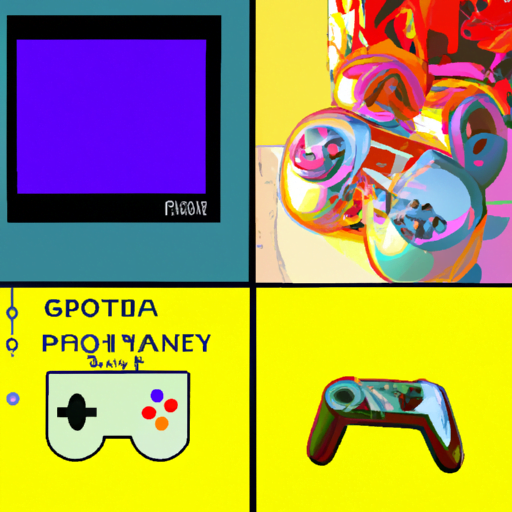
-
Table of Contents
Designing Gaming Interfaces

Gaming interfaces play a crucial role in the overall gaming experience. They serve as the bridge between players and the virtual world, allowing users to interact with the game mechanics, navigate through menus, and control their in-game characters. A well-designed gaming interface can enhance immersion, improve usability, and ultimately contribute to the success of a game. In this article, we will explore the key principles and best practices for designing gaming interfaces, backed by research, case studies, and industry insights.
The Importance of User-Centered Design
When it comes to designing gaming interfaces, a user-centered approach is paramount. Understanding the needs, preferences, and behaviors of the target audience is crucial for creating an interface that is intuitive, engaging, and enjoyable to use. User research, usability testing, and iterative design processes are essential components of user-centered design.
For example, in the case of the popular game “Fortnite,” the developers conducted extensive user research to understand the preferences and expectations of their target audience, which primarily consisted of younger players. This research informed the design decisions, resulting in a colorful and visually appealing interface that resonated with the target demographic.
Visual Hierarchy and Information Architecture
Visual hierarchy is a fundamental principle in interface design, and it plays a crucial role in gaming interfaces as well. By establishing a clear visual hierarchy, designers can guide players’ attention to the most important elements on the screen, such as health bars, ammo counters, or mission objectives.
One effective way to establish visual hierarchy is through the use of size, color, and contrast. For example, important elements can be larger in size, have a distinct color, or be placed in a prominent position on the screen. This helps players quickly identify and process critical information during gameplay.
Another important aspect of designing gaming interfaces is information architecture. The organization and structure of menus, submenus, and in-game HUDs (Heads-Up Displays) significantly impact the user experience. A well-organized interface allows players to easily navigate through different screens, access game settings, and find relevant information without feeling overwhelmed or confused.
Responsive and Adaptive Design
In today’s gaming landscape, where players use a wide range of devices, including smartphones, tablets, consoles, and PCs, it is crucial to consider responsive and adaptive design principles. Responsive design ensures that the interface adapts to different screen sizes and resolutions, providing a consistent experience across devices.
Adaptive design takes responsiveness a step further by tailoring the interface to the specific capabilities and limitations of each device. For example, a mobile version of a game may have a simplified interface with larger buttons and touch-friendly controls, while the PC version may offer more complex controls and additional features.
By considering the unique characteristics of each platform and device, designers can create interfaces that are optimized for the best possible user experience, regardless of the device being used.
Usability and Accessibility
Usability and accessibility are critical considerations in gaming interface design. A usable interface ensures that players can easily understand and navigate through the game’s menus, controls, and settings. It minimizes the learning curve and allows players to focus on the gameplay itself.
Accessibility is equally important, as it ensures that players with disabilities can also enjoy the game. Designing interfaces with accessibility in mind involves considerations such as providing alternative input methods, customizable controls, and options for adjusting text size and color contrast.
For example, the game “The Last of Us Part II” received praise for its extensive accessibility options, including features like high-contrast mode, text-to-speech, and customizable button mapping. These features allowed players with different abilities to fully enjoy the game and contributed to its positive reception.
Feedback and Interactivity
Feedback and interactivity are crucial elements of a well-designed gaming interface. Providing clear and immediate feedback to players’ actions helps them understand the consequences of their choices and actions within the game world.
Visual and auditory cues, such as animations, sound effects, and haptic feedback, can enhance the sense of immersion and make the interface more engaging. For example, when a player successfully completes a task or collects a power-up, a visual and auditory feedback loop can reinforce the sense of achievement and progress.
Interactivity is another important aspect of gaming interfaces. Well-designed controls and input mechanisms allow players to interact with the game world in a natural and intuitive way. Whether it’s using a gamepad, keyboard and mouse, or touch controls, the interface should provide a seamless and responsive experience.
Case Study: “The Legend of Zelda: Breath of the Wild”
“The Legend of Zelda: Breath of the Wild” is a prime example of a game with a well-designed interface. The game’s interface seamlessly integrates with the gameplay, providing players with essential information while maintaining a sense of immersion.
The game uses a minimalist HUD that only displays crucial information, such as health, stamina, and a minimap. This approach reduces visual clutter and allows players to focus on the expansive game world. Additional information, such as inventory and quests, can be accessed through intuitive menus that are easy to navigate.
The interface also incorporates visual and auditory feedback to enhance the player’s experience. For example, when the player is low on health, the screen gradually desaturates, and the sound effects change to indicate the urgency of the situation. These subtle cues provide valuable feedback without disrupting the gameplay flow.
Conclusion
Designing gaming interfaces requires careful consideration of user needs, visual hierarchy, responsive design, usability, and interactivity. By following user-centered design principles and incorporating feedback from user research and testing, designers can create interfaces that enhance the gaming experience and contribute to the success of a game.
Remember to establish a clear visual hierarchy, organize information effectively, and design for responsiveness and adaptability across different devices. Prioritize usability and accessibility to ensure that all players can enjoy the game, regardless of their abilities. Finally, provide meaningful feedback and interactivity to engage players and enhance immersion.
By applying these principles and best practices, designers can create gaming interfaces that captivate players, facilitate gameplay, and contribute to the overall success of a game.
